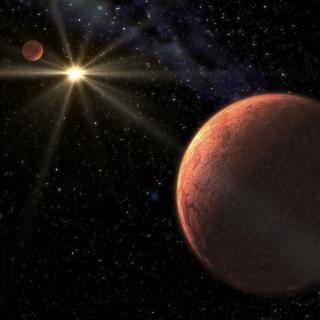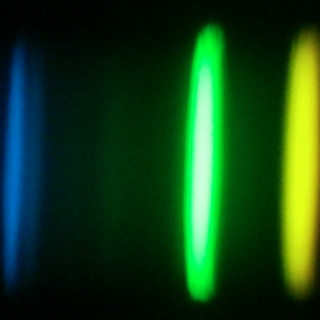Damasso, M.; Sozzetti, A.; Lovis, C.; Barros, S. C. C.; Sousa, S. G.; Demangeon, O. D. S.; Faria, J. P.; Lillo-Box, J.; Cristiani, S.; Pepe, F.; Rebolo, R.; Santos, N. C.; Zapatero Osorio, M. R.; González Hernández, J. I.; Amate, M.; Pasquini, L.; Zerbi, F. M.; Adibekyan, V.; Abreu, M.; Affolter, M.; Alibert, Y.; Aliverti, M.; Allart, R.; Allende Prieto, C.; Álvarez, D.; Alves, D.; Avila, G.; Baldini, V.; Bandy, T.; Benz, W.; Bianco, A.; Borsa, F.; Bossini, D.; Bourrier, V.; Bouchy, F.; Broeg, C.; Cabral, A.; Calderone, G.; Cirami, R.; Coelho, J.; Conconi, P.; Coretti, I.; Cumani, C.; Cupani, G.; D'Odorico, V.; Deiries, S.; Dekker, H.; Delabre, B.; Di Marcantonio, P.; Dumusque, X.; Ehrenreich, D.; Figueira, P.; Fragoso, A.; Genolet, L.; Genoni, M.; Génova Santos, R.; Hughes, I.; Iwert, O.; Kerber, F.; Knudstrup, J.; Landoni, M.; Lavie, B.; Lizon, J. -L.; Lo Curto, G.; Maire, C.; Martins, C. J. A. P.; Mégevand, D.; Mehner, A.; Micela, G.; Modigliani, A.; Molaro, P.; Monteiro, M. A.; Monteiro, M. J. P. F. G.; Moschetti, M.; Mueller, E.; Murphy, M. T.; Nunes, N.; Oggioni, L.; Oliveira, A.; Oshagh, M.; Pallé, E.; Pariani, G.; Poretti, E.; Rasilla, J. L.; Rebordão, J.; Redaelli, E. M.; Riva, M.; Santana Tschudi, S.; Santin, P.; Santos, P.; Ségransan, D.; Schmidt, T. M.; Segovia, A.; Sosnowska, D.; Spanò, P.; Suárez Mascareño, A.; Tabernero, H.; Tenegi, F.; Udry, S.; Zanutta, A.
Referencia bibliográfica
Astronomy and Astrophysics
Fecha de publicación:
10
2020
Revista
Número de citas
56
Número de citas referidas
51
Descripción
Context. The bright star π Men was chosen as the first target for a radial velocity follow-up to test the performance of ESPRESSO, the new high-resolution spectrograph at the European Southern Observatory's Very Large Telescope. The star hosts a multi-planet system (a transiting 4 M⊕ planet at ~0.07 au and a sub-stellar companion on a ~2100-day eccentric orbit), which is particularly suitable for a precise multi-technique characterization.
Aims: With the new ESPRESSO observations, which cover a time span of 200 days, we aim to improve the precision and accuracy of the planet parameters and search for additional low-mass companions. We also take advantage of the new photometric transits of π Men c observed by TESS over a time span that overlaps with that of the ESPRESSO follow-up campaign.
Methods: We analysed the enlarged spectroscopic and photometric datasets and compared the results to those in the literature. We further characterized the system by means of absolute astrometry with HIPPARCOS and Gaia. We used the high-resolution spectra of ESPRESSO for an independent determination of the stellar fundamental parameters.
Results: We present a precise characterization of the planetary system around π Men. The ESPRESSO radial velocities alone (37 nightly binned data with typical uncertainty of 10 cm s-1) allow for a precise retrieval of the Doppler signal induced by π Men c. The residuals show a root mean square of 1.2 m s-1, which is half that of the HARPS data; based on the residuals, we put limits on the presence of additional low-mass planets (e.g. we can exclude companions with a minimum mass less than ~2 M⊕ within the orbit of π Men c). We improve the ephemeris of π Men c using 18 additional TESS transits, and, in combination with the astrometric measurements, we determine the inclination of the orbital plane of π Men b with high precision (ib =45.8-1.1+1.4 deg). This leads to the precise measurement of its absolute mass mb =14.1-0.4+0.5 MJup, indicating that π Men b can be classified as a brown dwarf.
Conclusions: The π Men system represents a nice example of the extreme precision radial velocities that can be obtained with ESPRESSO for bright targets. Our determination of the 3D architecture of the π Men planetary system and the high relative misalignment of the planetary orbital planes put constraints on and challenge the theories of the formation and dynamical evolution of planetary systems. The accurate measurement of the mass of π Men b contributes to make the brown dwarf desert a bit greener.
Aims: With the new ESPRESSO observations, which cover a time span of 200 days, we aim to improve the precision and accuracy of the planet parameters and search for additional low-mass companions. We also take advantage of the new photometric transits of π Men c observed by TESS over a time span that overlaps with that of the ESPRESSO follow-up campaign.
Methods: We analysed the enlarged spectroscopic and photometric datasets and compared the results to those in the literature. We further characterized the system by means of absolute astrometry with HIPPARCOS and Gaia. We used the high-resolution spectra of ESPRESSO for an independent determination of the stellar fundamental parameters.
Results: We present a precise characterization of the planetary system around π Men. The ESPRESSO radial velocities alone (37 nightly binned data with typical uncertainty of 10 cm s-1) allow for a precise retrieval of the Doppler signal induced by π Men c. The residuals show a root mean square of 1.2 m s-1, which is half that of the HARPS data; based on the residuals, we put limits on the presence of additional low-mass planets (e.g. we can exclude companions with a minimum mass less than ~2 M⊕ within the orbit of π Men c). We improve the ephemeris of π Men c using 18 additional TESS transits, and, in combination with the astrometric measurements, we determine the inclination of the orbital plane of π Men b with high precision (ib =45.8-1.1+1.4 deg). This leads to the precise measurement of its absolute mass mb =14.1-0.4+0.5 MJup, indicating that π Men b can be classified as a brown dwarf.
Conclusions: The π Men system represents a nice example of the extreme precision radial velocities that can be obtained with ESPRESSO for bright targets. Our determination of the 3D architecture of the π Men planetary system and the high relative misalignment of the planetary orbital planes put constraints on and challenge the theories of the formation and dynamical evolution of planetary systems. The accurate measurement of the mass of π Men b contributes to make the brown dwarf desert a bit greener.
Tables B.1 and B.2 are only available at the CDS via anonymous ftp to http://cdsarc.u-strasbg.fr (ftp://130.79.128.5) or via http://cdsarc.u-strasbg.fr/viz-bin/cat/J/A+A/642/A31
Based (in part) on Guaranteed Time Observations collected at the European Southern Observatory (ESO) under ESO programme(s) 1102.C-0744, 1102.C-0958, and 1104.C-0350 by the ESPRESSO Consortium.
Proyectos relacionados

Estrellas de Baja Masa, Enanas Marrones y Planetas
Se investigan los procesos que conducen a la formación de estrellas de baja masa, enanas marrones y exoplanetas y caracterizar las propiedades físicas de estos astros en varias etapas evolutivas. Las estrellas de muy baja masa y las enanas marrones son probablemente los objetos más numerosos de nuestra Galaxia, pero no por ello están
Rafael
Rebolo López

Exoplanetas y Astrobiología
La búsqueda de vida en el Universo se ha visto impulsada por los recientes descubrimientos de planetas alrededor de otras estrellas (los llamados exoplanetas), convirtiéndose en uno de los campos más activos dentro de la Astrofísica moderna. En los últimos años los descubrimientos cada vez más numerosos de nuevos exoplanetas y los últimos avances
Enric
Pallé Bago

Abundancias Químicas en Estrellas
La espectroscopía de estrellas nos permite determinar las propiedades y composiciones químicas de las mismas. A partir de esta información para estrellas de diferente edad en la Vía Láctea es posible reconstruir la evolución química de la Galaxia, así como el origen de los elementos más pesados que el boro, forjados principalmente en los interiores
Carlos
Allende Prieto